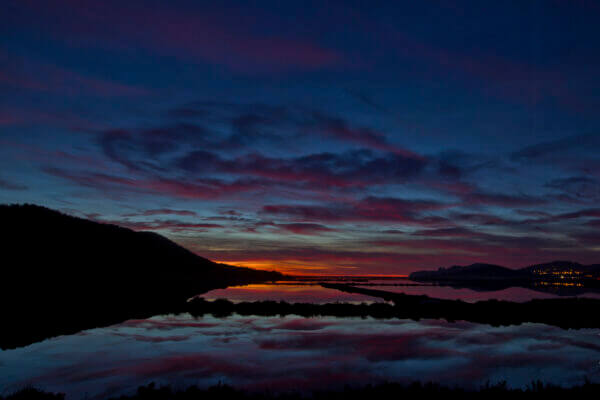A visit to the natural park Ses Salines with the salt fields is also highly recommended and should be on your holiday list. The nature reserve is located in the south of Ibiza and extends to the north of Formentera. The 16,000 hectare area is home to a number of ecosystems of varying importance, including salt pans, marshes and the Mediterranean’s largest continuous expanse of seagrass beds.
It is said that the notorious Vikings visited Ibiza to get salt. In the Middle Ages, salt played an important role as a preservative and was primarily used to preserve various types of meat or fish.
1 – Torre de Sal
2 – Official Observation Hut
3 – Falco’s Cap
4 – Playa Es Cavallet
5 – Torre de Ses Portes
6 – Sa Canal & Salt Loading Point
7 – San Francesc de S’Estany & Official Observation Hut
8 – Salt Mountain / Salt Storage
It is one of the most beautiful areas of Ibiza, located in the south of the island and declared a nature reserve in 2001. Salt production began here hundreds of years ago, which has left its mark on the landscape. Many migratory birds rest and nest in this wetland, stopping here on their long journeys. The 3,000 hectares of land and 13,000 hectares of sea are not only home to a great biodiversity and beautiful landscapes, but also a lot of history and culture. Nature lovers will be delighted, because over 200 special bird species can be observed here. Among other things, flamingos, shovelers and stilts.
In the coastal landscape of the nature reserve, there is a perfect interplay of the sea and coast ecosystems. The Neptune grass (Posidonia) found here was declared a UNESCO World Heritage Site in 1999 and declared the best preserved occurrence of this species in the Mediterranean. A total of 220 different species have their habitat here on the seabed.
und Küste statt. Das hier vorkommende Neptungras (Posidonia) wurde 1999 zum UNESCO-Welterbe ernannt und zum besterhaltenen Vorkommen dieser Art im Mittelmeer erklärt. Insgesamt haben hier am Meeresboden 220 verschiedene Spezies ihren Lebensraum.











